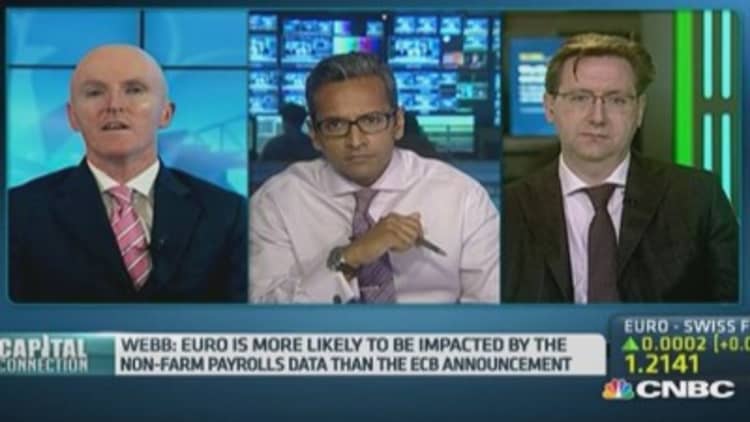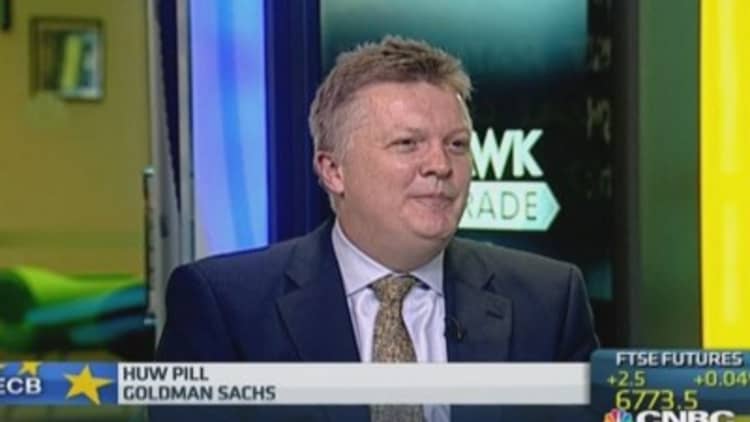
Attention will turn to the details of the European Central Bank's new stimulus measures when the ECB meets on Thursday, as the dust settles after the extraordinary package was announced in June.
The 24-member Governing Council is unlikely to take fresh policy action at its July gathering after cutting interest rates to record lows last month - the deposit rate to below zero - and revealing a 400 billion-euro ($545.62 billion) loan program.
By offering banks four-year loans at ultra-cheap rates, the ECB hopes to entice banks to lend more freely, particularly to small- and medium-sized companies in the euro zone periphery. But the program's fine print has not been released yet.
Read MoreECB to 'takeit easy' after June's fireworks
"It is absolutely not clear how they (the ECB) will enforce the conditionality of the loans," said Marco Valli, chief euro zone economist at UniCredit. "It is difficult to do in practice, because money is fungible."
Banks used large parts of the last round of cheap ECB funding in 2011/2012 to buy higher-yielding government bonds. The question is how the ECB will avoid similar behaviour this time and steer the money towards company loans instead.
Clarification on how long the ECB intends to keep interest rates low will be a key to take-up of the loans, called targeted long-term refinancing operations (TLTROs).

The head of Italy's main banking association ABI, Antonio Patuelli, has already said he i convinced the program will be a success, particularly in Italy.
Prospect of QE
So far, the decision to lower the deposit rate below zero - in effect, to charge banks for parking their excess money at the central bank overnight - has not yet reanimated money markets, but it is helping to keep short-term rates low and steady.
Read MoreIMF's Lagarde urges ECB to consider QE
The euro is trading below $1.37, roughly where it was when the ECB met on June 5 but down from over $1.39 before the ECB flagged the cut in May. The ECB is keeping a close eye on the euro to gauge its impact on already low inflation.
Euro zone inflation stood at 0.5 percent in June, well below the ECB's medium-term target of just under 2 percent.
Should the outlook for inflation deteriorate, President Mario Draghi said, the ECB would consider quantitative easing (QE) - essentially creating money to buy government or private debt from banks, to keep borrowing costs low and boost spending.
Read MoreEuro zone inflationsteady ahead of ECB meeting
Draghi is expected to keep the door open for such steps, but the threshold remains high despite pressure from the International Monetary Fund and the French government to be more aggressive in easing monetary policy to stimulate growth.
"The outlook would need to change materially," Nordea analysts Suvi Kosonen and Jan von Gerich wrote. "It will be late this year, at the earliest, before the ECB has any clearer picture of what its recent easing package can do."


